For the people in Tibet, religion is very important and shapes many aspects of the life. The dominant religion, Tibetan Buddhism, has blended many pre-Buddhism shamanic and animist beliefs into the current religion. These animist features make Tibetan people worships many snow-capped mountains and lakes. They believe the mountains and lakes are dwellings for deities and rocks have spirits. Pilgrimages circling around these sacred mountains and lakes are believed to cleans the sins thus are journeys from ignorance to nirvana. For this reason, you can see many people circling around these sacred places throughout the year.
Probably the most famous and holiest of such geographical features is Mount Kailash. This sacred mountain is the centre of the world for Hinduism, Tibetan Buddhism as well as Jainism. For centuries, this mountain became the Mecca for pilgrims.
Like mountains, lakes are considered sacred by Tibetan people. They are believed to be the dwelling places for protective deities. This is also believed to give these sacred places a spiritual power.
Tibetan holy lakes are visited for pilgrimages and many of them have monasteries on their shores and on small islands on the lake. But other than their spiritual importance, these lakes are stunningly beautiful. Their water is fed from glaciers in the mountains and are crystal clear. They are surrounded by majestic mountains and offers fantastic sightseeing’s.
There are many holy lakes in Tibet. Here we have listed top 6 of them.
Yamdrok Tso Lake
Surrounded by dull grey and green mountains, Yamdrok Tso Lake is one of the three largest sacred lakes in Tibet. This 72 km (45 mi) long fresh water lake is surrounded by many snow-capped mountains and is fed by numerous small streams.
Yamdrok Lake is one of the four “Great Wrathful Lakes” guarded by the goddess Dorje Gegkyi Tso. This lake is so important that according to the Tibetan belief, if it dries, Tibet will no longer be habitable.
The lake, its islands and surrounding area is associated with the second Buddha, Padmasambhava, who brought Buddhism to Tibet in 8th century.
Yamdrok Lake is a very beautiful lake with blue waters surrounded by snow-capped mountains. The lake is on Friendship Highway S307 (the highway connecting Nepal to Tibet) and you can have a panoramic view of the lake from the road.
Samding Monastery is on a barren hill about 90 metres (300 ft) above the lake at the neck of a narrow peninsula jutting out into the water. This monastery is where the third highest lama in Tibetan Buddhism is said to have been reincarnated for hundreds of years. This is also the only Tibetan monastery to be headed by a female re-incarnation.
Join-in our 5 Days Lhasa and Yamdrok Lake Small Group Tour
Namtso Lake
Surrounded by snow-capped mountains and open grassland, dotted with yak herds and local nomads, Namtso Lake (Heavenly Lake) is the largest lake in the Tibet. This saltwater Lake is also the highest saltwater lake in the world. The lake has a magnificent view of the surrounding mountains over its turquoise waters and especially offers fantastic sunrise and sunset view.
Namtso Lake has five uninhabited islands of reasonable size. Like the hills around the lake, these islands have been used spiritual retreat by pilgrims who walk over the lake’s frozen surface at the end of winter.
Namtso is one of the holy lakes and like Yamdrok Tso Lake is one of the four “Great Wrathful Lakes” guarded by the goddess Dorje Gegkyi Tso (the other two are Lhamo La-tso and Manasarovar). Dorje Gegkyi Tso is one of the twelve goddesses who are believed to be the worldly protector according to Tibet Buddhism. The lake is said to have descended from the heavens to earth. According to the legend, Namtso is the daughter of god Indra (a guardian deity in Buddhism, and the king of first heaven) and the wife of Nyenchen Tanglha.
It is believed that if one walks around the lake once during the year of the sheep (last one was in 2015), he and his family will be blessed with health, knowledge and good fortune.
You can visit Namtso Lake with a day trip. The road is closed from December to March and the best time to visit is June to September. There is no hotel accommodation around the lake and there is a camp side.
Join-in our 6 Days Lhasa and Lake Namtso Small Group Tour
Lake Manasarovar
Lake Manasarovar (meaning “the Immortal Lake of Jade”), according to Buddhist, is the holiest lake (this freshwater lake is in fact not only sacred for Buddhist but also for Hindus, and Jains). Lake Manasarovar, the Mother of the Holy Lakes, is the lake in which a great Tibetan monk saw the letters “Aha”, ” Kha”, ” Mha” and these initials helped the search team to locate the current the 14th Dalia Lama of Tibet.
Lake Manasarovar is an important pilgrimage for Buddhists and Hindus. For Hindus, Lake Manasarovar is a personification of purity. One who drinks water from the lake is believed to be cleansed from sins of 100 lives. Besides itself is important, Lake Manasarovar is also near Mount Kailash, which is according to Hinduism, Tibetan Buddhism and Jainism, centre of the world (the lake is 2,000 kilometers away from Lhasa, located at the southern foot of Mount Kailash).
The lake is also the source of four great rivers in Asia, namely the Indus, the Sutlej, the Karnali and the Brahmaputra.
Lakes crystal clear waters are blue near the shores and emerald green at the centre. It is in an area named Ngari (in the west of Tibet). This is the horizon of the sky for Tibetans.
Join-in our 15 Days Kailash Pilgrimage Small Group Tour
Basum Lake
Basum Lake is like many other lakes in Tibet is surrounded by snow-capped peaks. But unlike many others, the lake is also surrounded by a natural forest. This is the largest barrier lake in the north of Tibet and it is like a Small Switzerland in Tibet.
Near the south bank there is a small island where the ancient Tsodzong Monastery of Nyingma Sect. The lake itself is sacred and every year crowds of pilgrims come from all directions. They circle the lake, pour butter for the lamps, burn joss sticks and pray in the temple.
Join-in our Eastern Tibet Nyingchi Tour
Ranwu Lake
Ranwu Lake is the largest lake in eastern Tibet, covering an area of 8.5 square miles (22 square kilometers). The lake is divided into upper, middle and lower parts. These are indeed three lakes connected by streams. It is known for its tranquil and colourful water. The lake is also famous for its flowers in the spring and the beautifully coloured trees in the autumn.
Join-in our 11 Days Travel to Tibet through Sichuan Highway
Pangong Tso Lake
Pangong Tso (Tibetan for “high grassland lake”) is a 134 km (83 mi) long lake extending from India to Tibet. The lake is 5 km (3.1 mi) wide at its broadest point. Approximately 60% of the length of Pangong Lake lies in Tibet. The lake is located at about 14,270ft (4,305m) above sea level and it is an endorheic lake (it does not flow into ocean).
In January to March, Pangong Tso remains mostly frozen. May, June, July and August is the peak tourist season. Pangong Tso is a scene of dispute between China and India. A part of the lake controlled by China is claimed by India.
Like the other lakes, visiting Pangong Tso Lake for hiking tours will be a very good experience. But if you are planning to hike around, be careful about the altitude sickness. The low oxygen content can easily cause this sickness, especially in the morning.
.jpg)




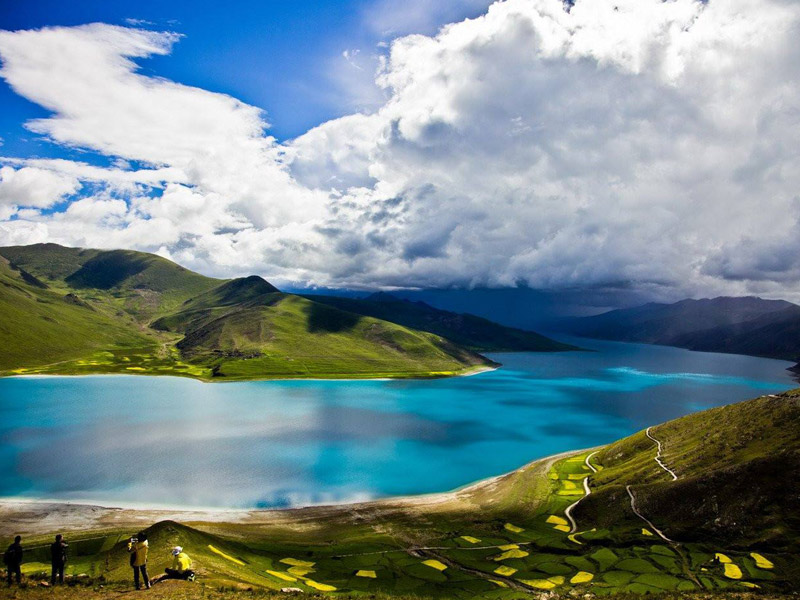
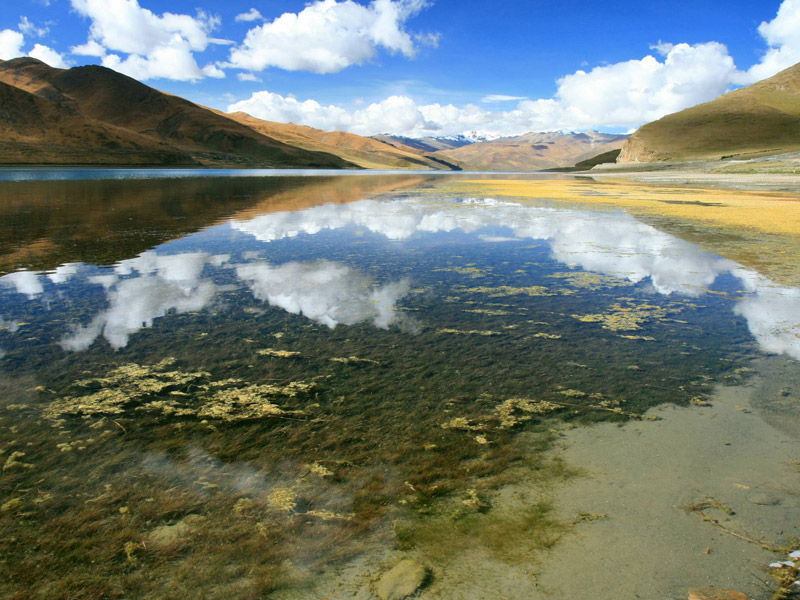
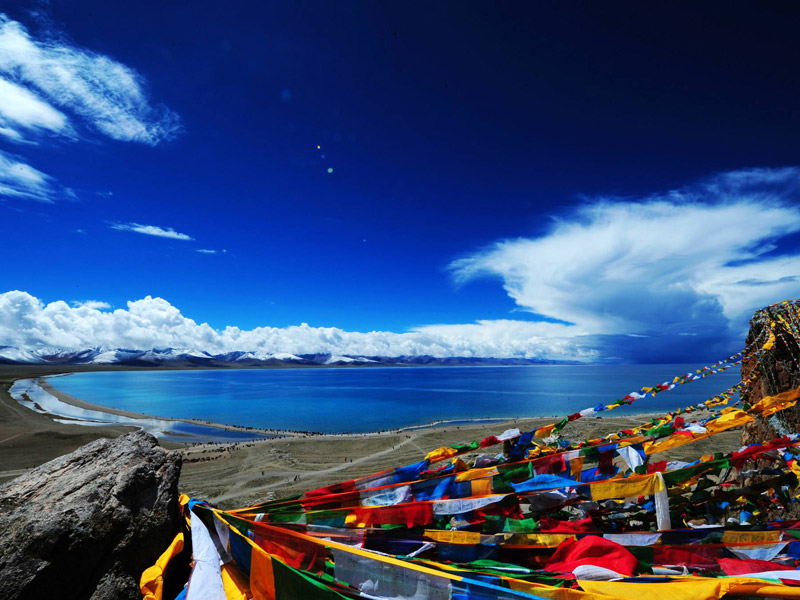

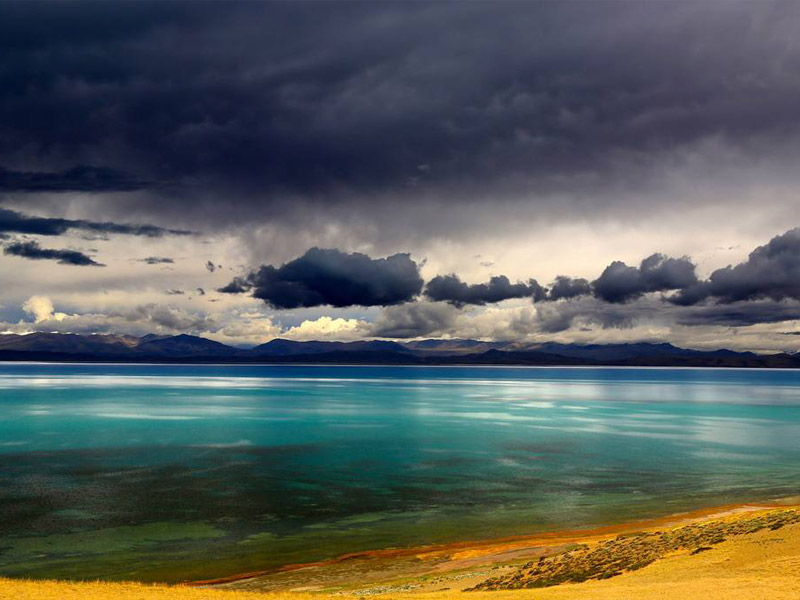

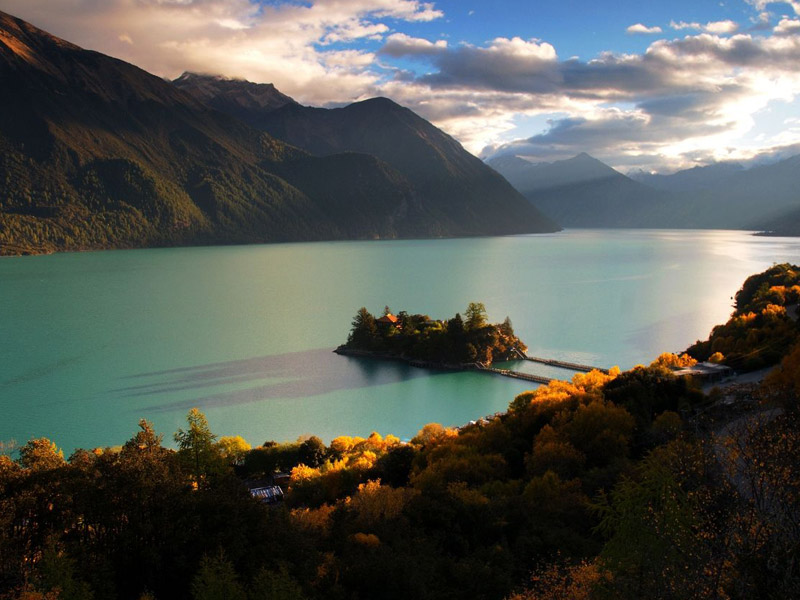
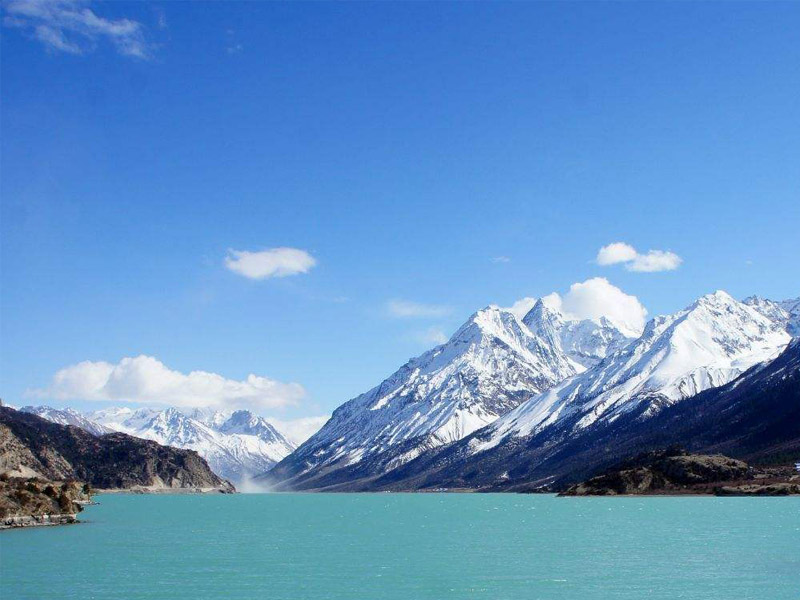


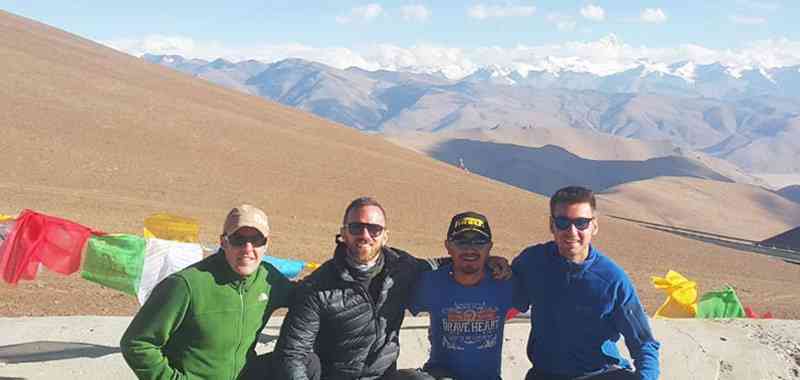






0 Comment ON "Top Six Holy Lakes in Tibet"